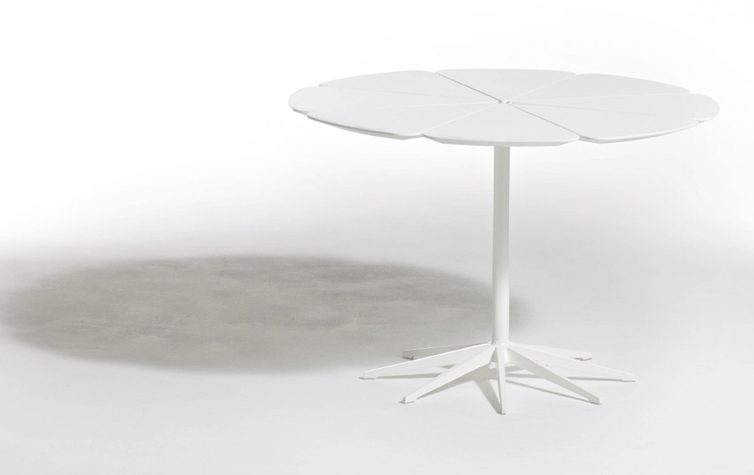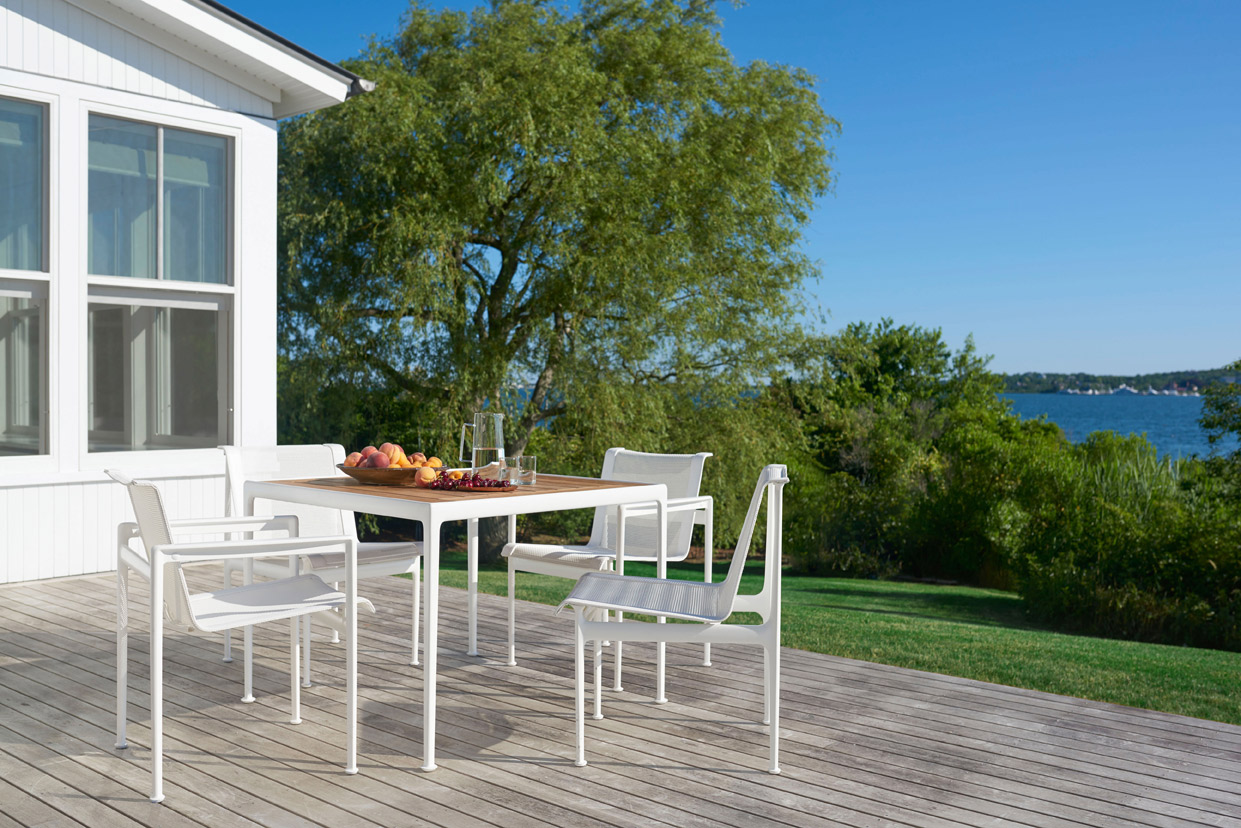
As we’ve so often heard, necessity is the mother of invention. It can also be the mother of design, as was the case with the development of the iconic outdoor furniture collections of Richard Schultz. Nearly a decade into his career with Knoll, Schultz got a package from Florence Knoll, then retired and living in Florida, which contained rusted bolts. “Why can’t we make a chair that actually works?” Knoll wrote, according to the company.
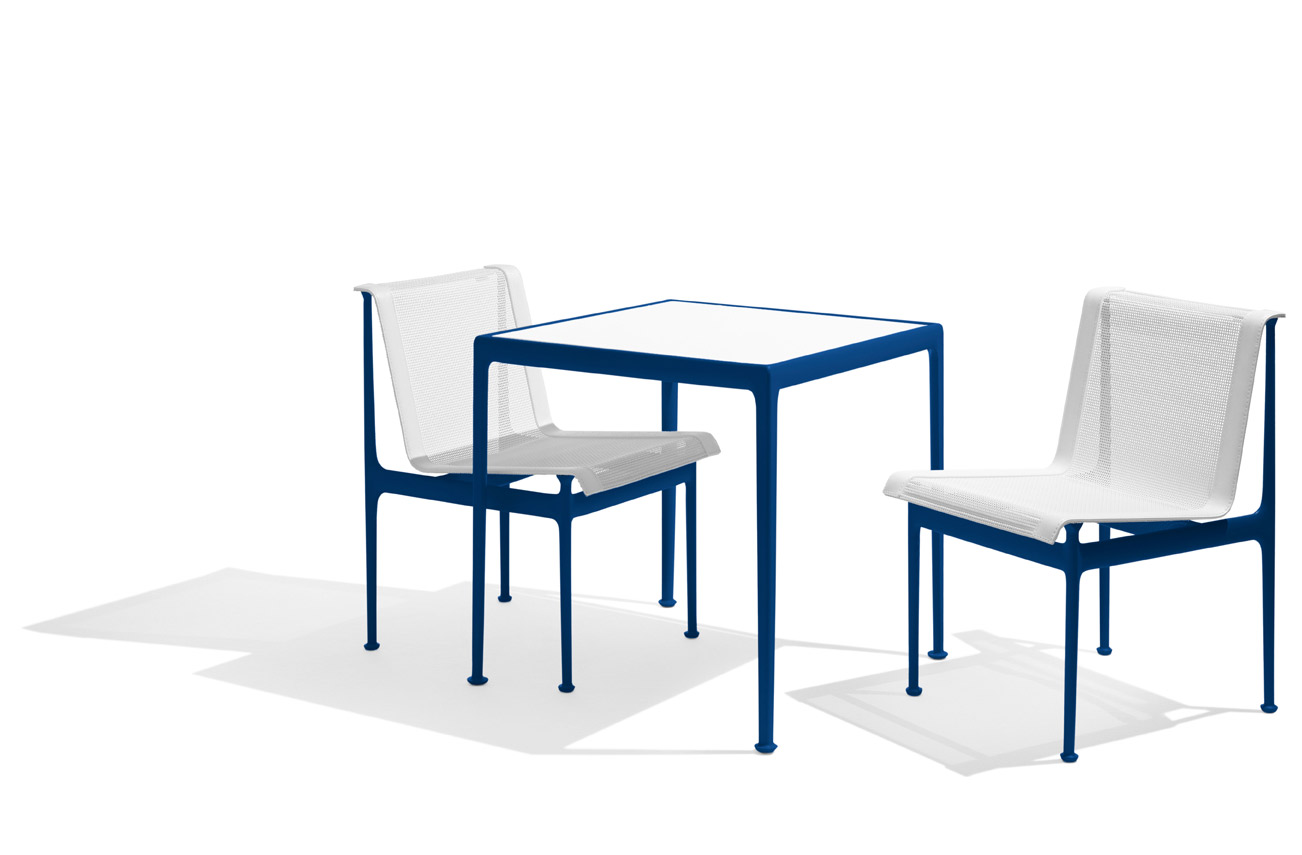
Inspired by this challenge, Schultz set about designing a collection of stylish modern outdoor furniture that could stand up to the elements, including Florida’s corrosive sea air. The result was The Leisure Collection (now sold as the 1966 Collection). Other outdoor furniture of the time was made from iron and steel structures with protective coatings that were prone to corrosion, but the pieces Schultz created for Knoll had frames featuring seamless aluminum castings coated with multiple layers of plastic paint, maintenance-free and rust-proof. Cool-to-the-touch, quick-drying and porous nylon Dacron was selected for the chairs. A colored vinyl strip ran along the edge to hide the connections and offer customization.
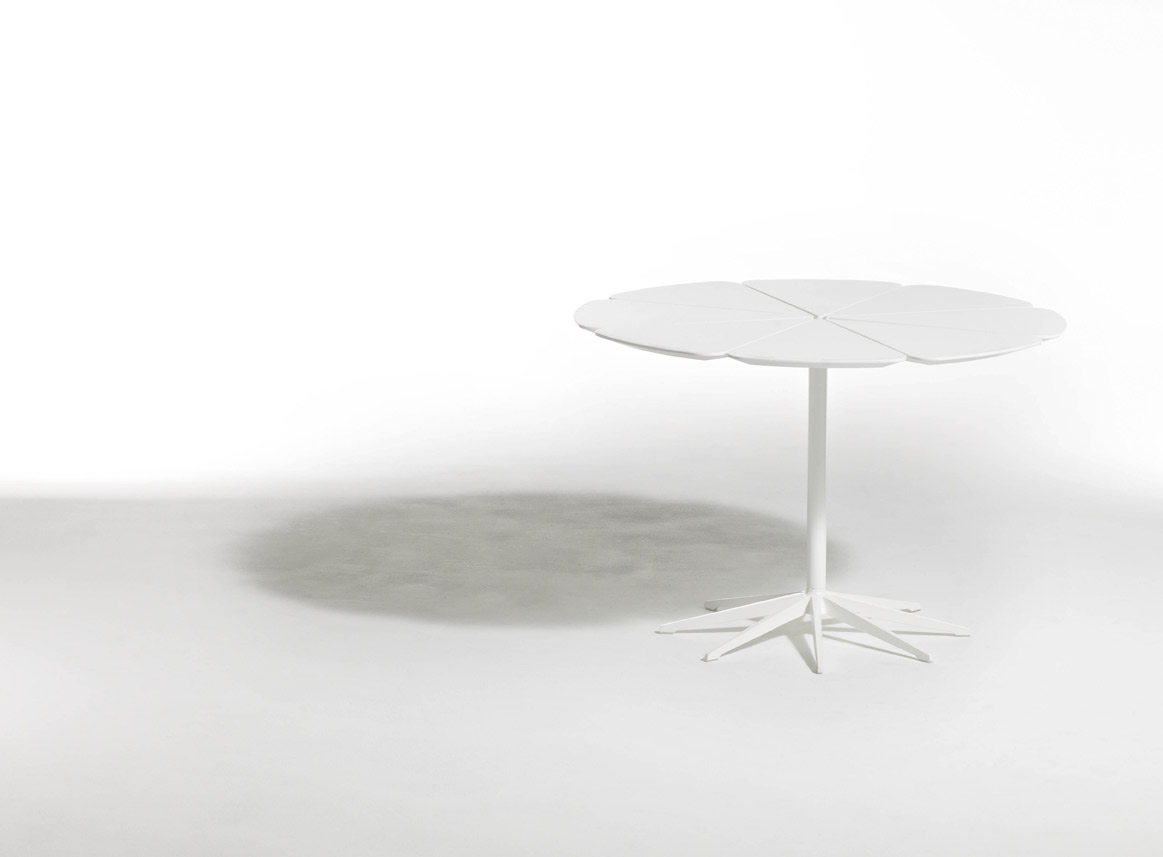
The development of this collection was informed by work Schultz had done throughout his time with Knoll. A student of mechanical engineering and design at Iowa State University and the Illinois Institute of Technology in Chicago, Schultz joined Knoll in 1951 where he was assigned to assist Harry Bertoia on the development of the Bertoia Wire Collection. He next spent 18 months in Europe establishing and supervising production of these designs for subsidiaries and licensees.
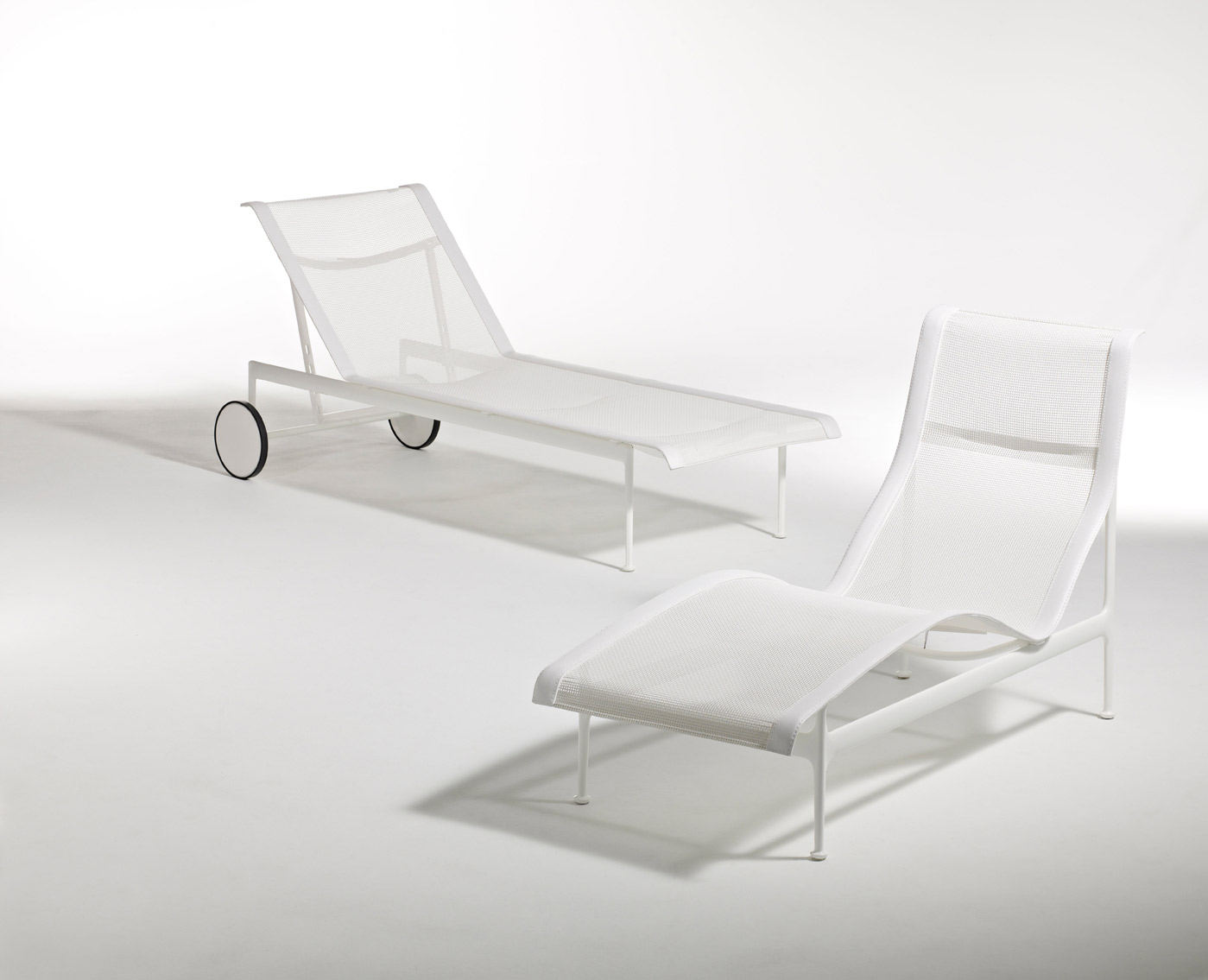
The relationship with Knoll benefited Schultz both professionally and personally. It was through the company that he met his wife Trudy Busch, who worked with Knoll as an interior designer. Florence Knoll lent the couple her Paris apartment for their honeymoon.
After returning to the United States, Richard Schultz designed the breakthrough Petal Table, inspired by Queen Anne’s Lace, a weed that grew on his farmhouse property. “My idea for the segmented top was to be able to look down through the petals and not see any support, as if they were floating,” he said in a 1978 interview. The table was designed to work with Bertoia’s chairs and was soon added to MoMA’s collection.
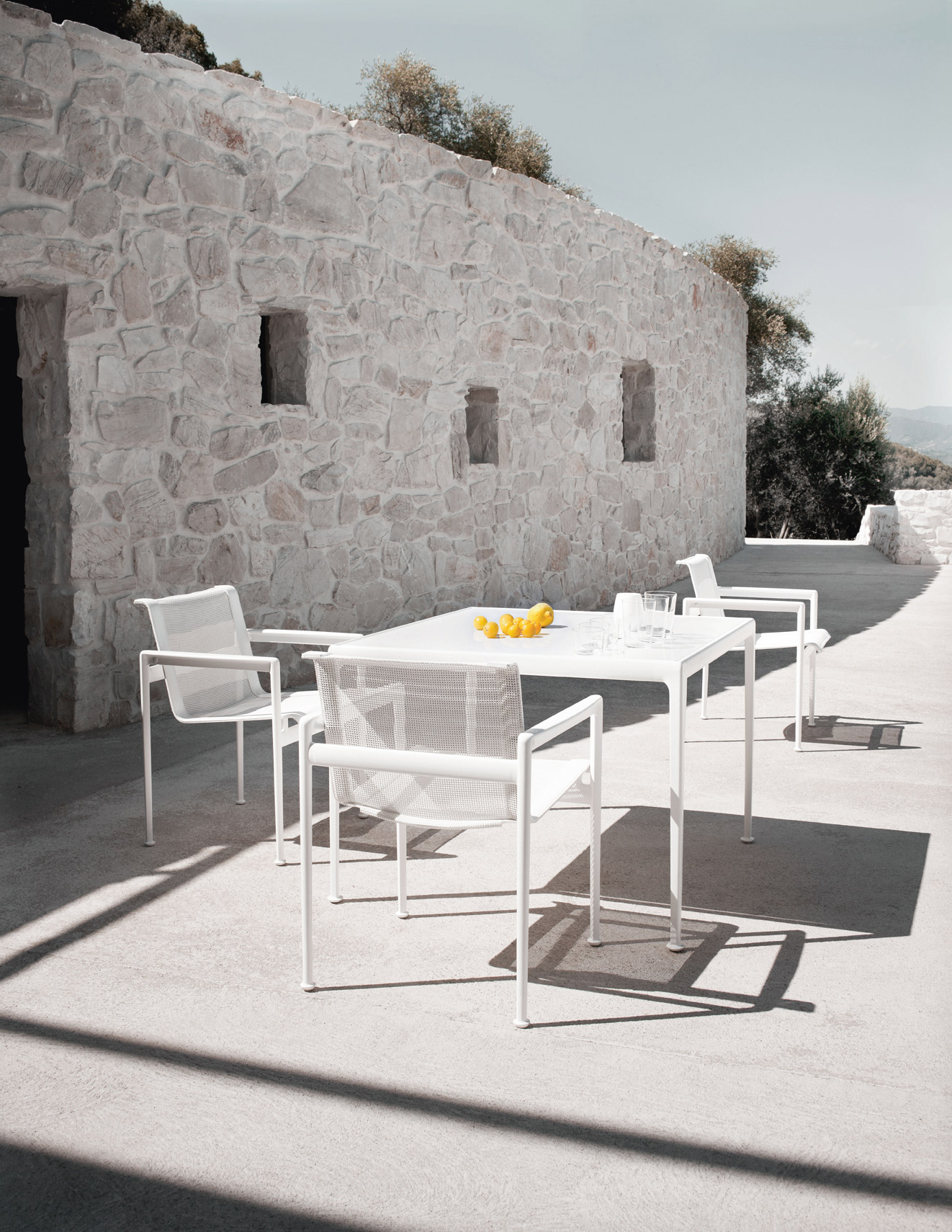
In 1973, Schultz left Knoll and worked for many years as a freelance designer. In 1992, with his son Peter, he created the Richard Schultz Design to both release his classic designs and new collections. In 2012, Knoll acquired the firm.
Richard Schultz is only the beginning. Read All About Your Favorite Icons in The Design Issue!
Whether it’s for the low-down on your favorite iconic designers to expert insight on furniture design, Atomic Ranch‘s second newsstand-only special issue, The Design Issue, is a must-have for your coffee table, bedside table or Petal table! Find this extra-large issue today at your favorite newsstand or order online.

